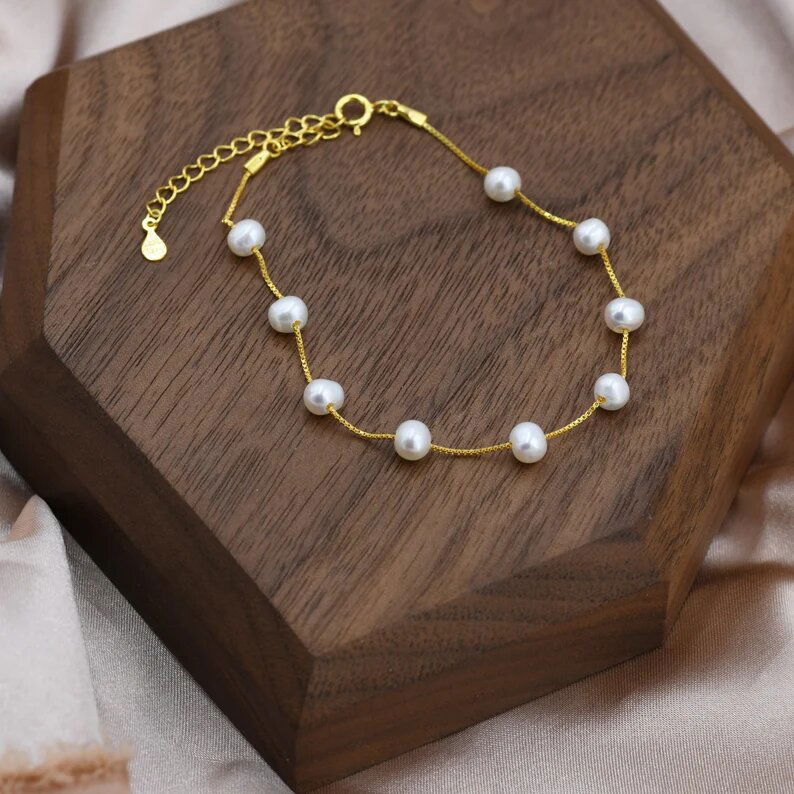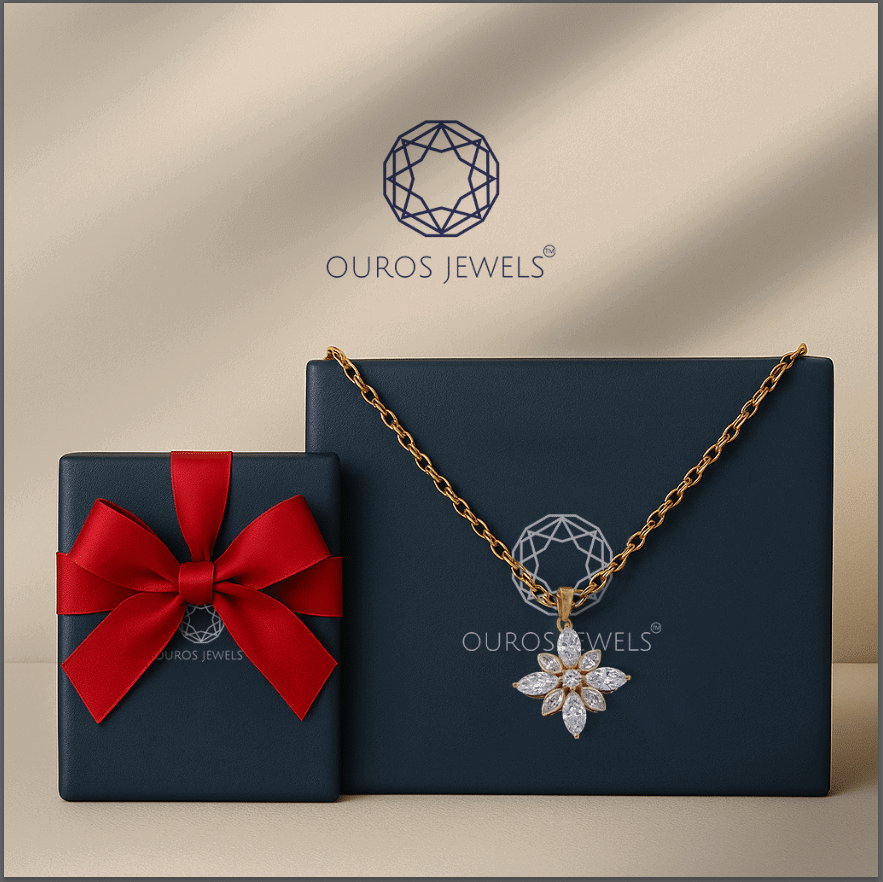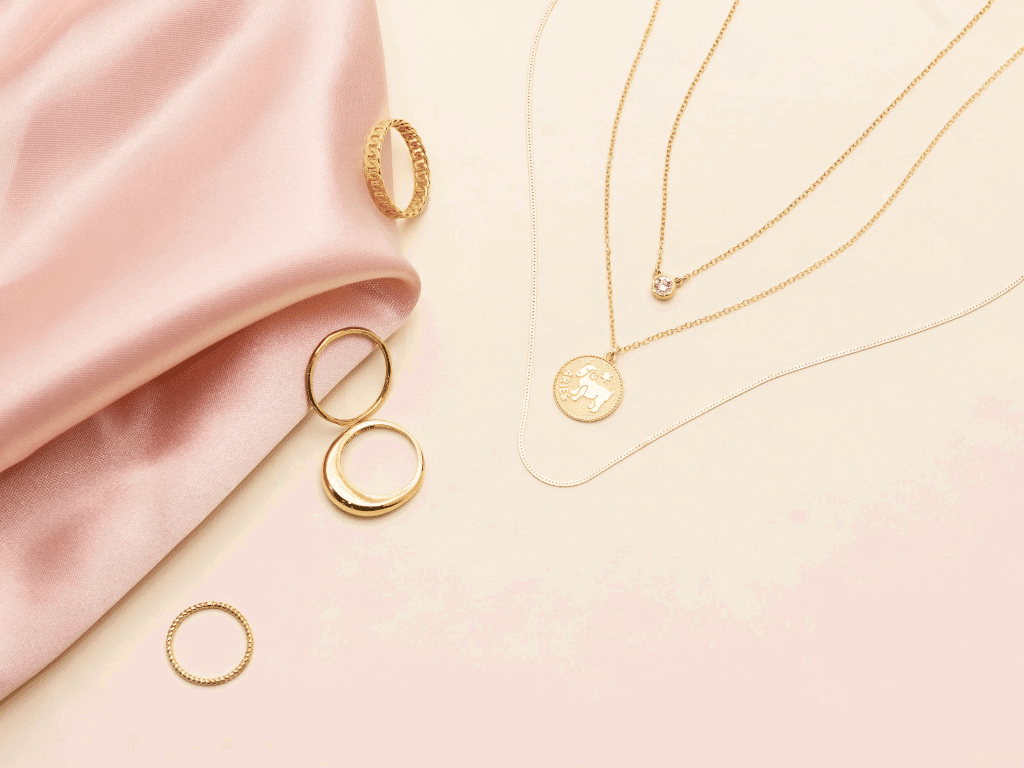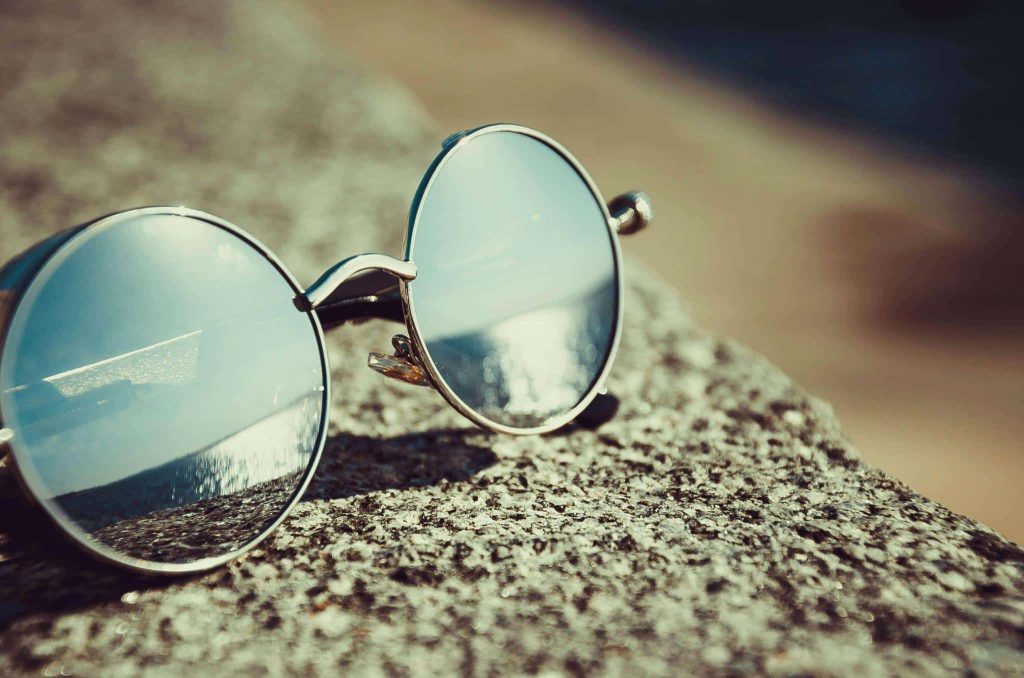Are you curious about freshwater vs saltwater pearls? Those shiny gems from the sea that shine so beautifully? Well, there are two special kinds: freshwater pearls and saltwater pearls.
Think about you’re at the beach; the ocean waves are marked around. Saltwater pearls come from oysters that live in the ocean. They have a touch of saltiness in their bright coats.
On the other hand, freshwater pearls are born in peaceful lakes and rivers. They have a different kind of beauty. Saltwater pearls often start with a tiny grain of sand inside the oyster.
The oyster takes its time, adding layer after layer to make a pearl. It’s like nature’s magic trick. Freshwater pearls, however, usually begin with pieces of mussel shell. We’ll learn more about these pearls’ colors, shapes, and even the cost.
So, open the sparkling tale of freshwater and saltwater pearls, two valuable gems from nature’s jewelry box.
What are Freshwater Pearls?
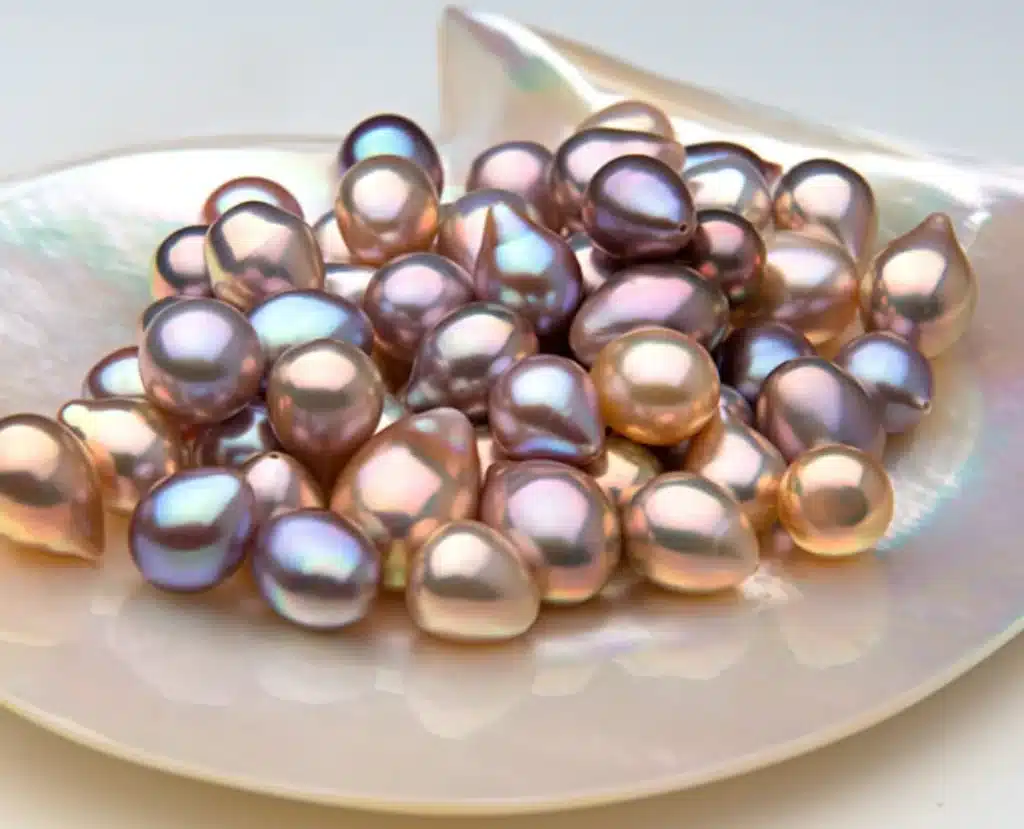
Freshwater pearls are gems that grow in mussels in lakes and rivers. They’re not the same as ocean pearls and are popular because they’re nice and not too costly. Making them involves putting a tiny piece of special stuff from one mussel into another.
This stuff bothers the mussel, so it covers it with glossy nacre material. These make layers and form a pearl. Freshwater pearls come in many colors, sizes, and shapes.
People who make jewelry like them because they can create all kinds of great jewelry. These pearls aren’t very expensive, and they look wonderful. People wear them for special events or just regular days. You can put them on necklaces, earrings, or bracelets to make yourself look fancier.
1. Origin
Pearls grow in mussels that live in lakes, rivers, and ponds. These mussels are similar to oysters, and they make pearls. These water homes give the pearls their pretty look. When a speck of sand or a small bug gets inside the mussel’s house, the mussel starts covering it with shiny stuff called nacre. Layer by layer, this nacre makes a pearl. The longer the mussel covers the speck or bug, the bigger the pearl gets.
It’s the mussel’s way of creating art in its home. People collect these pearls and use them to make jewelry and amazing things. So, next time you see lovely freshwater pearls, you’ll know it all began in a mussel’s comfy home in a lake, river, or pond.
2. Abundance
Things have become simpler and cheaper because we’re making more of them now. Think aboutthere’s a factory that makes stuff. Well, that factory is now making more stuff than before. This is cool because when there’s lots of stuff, its price goes down. This helps everyone because then they can buy the stuff they need without spending lots of money.
To make it simpler to grasp, try adding a lovely jewelry box to this collection of things that are easy to get. These freshwater pearls not only make our choices more useful and inviting but also give a mark of beauty to what we can have.
3. Variety
Be ready to look intolots of different things. Think ofa big collection of choices. They come in many colors, shapes, and sizes. Some are even not the usual shapes. So, you have a bunch of options to pick from. Whether you prefer the usual stuff or want something different, you’re in luck. Think of it as a bunch of cool stuff to choose from, and you can easily find what you want.
Whether you like the regular things or want something a bit out of the ordinary, you can find the perfect thing among all these freshwater pearls.
4. Luster
These freshwater pearls shine and grab your attention with their fantastic glow. But it’s not as bright as those pearls that come from the salty ocean water. You know, those ocean pearls have this extra strong shine because they grow in a unique kind of home.
On the other hand, this thing we’re talking about still shines fabulously, but not as strongly as those ocean pearls. It’s because of where and how they’re made that makes them different.
So, when you look at this thing, it might not be as glossy as the ocean pearls, but it’s still got its gentle glow. And that’s what makes it interesting: it has the kind of brightness that some people like.
5. Nacre Thickness
Pearls are really strong because they have thick, smooth layers called nacre, resembling the strong links of earrings. These layers protect the pearl and help it last a long time. Try them as strong shields that keep the pearl safe and shiny. The way pearls are made is pretty cool. It starts when a speck of sand or something else gets inside an oyster. The oyster covers this speck with nacre layers. More and more layers get added every year, and that’s how the pearl grows. This freshwater vs saltwater pearl’s slow growth makes the pearl tough and able to stay looking good for a lot of years.
6. Cultivation
It’s like getting lots of pearls from just one shell. People help this happen. They put a tiny piece, like a grain of sand, inside the mussel. The mussel doesn’t like this thing, so it covers it with something called nacre. This nacre keeps growing, and after a while, it becomes a pearl. What’s even cooler is that farmers can do this with lots of mussels together, making many pearls. So, from one mussel, we can get many pearls—these freshwater pearls help us have more to use and enjoy.
7. Value
These gems are usually cheaper, so they’re a top choice for making all kinds of jewelry. Even though they don’t cost a lot, they still look pretty on jewelry. That’s why many people pick these gems when they want jewelry that doesn’t cost too much.
These freshwater pearls might be affordable, but they’re just as nice as the fancier ones. They come in lots of colors and sizes, which makes them even better. It doesn’t matter if you want a polished necklace, fancy earrings, or a cool ring. These gems are a good way to get jewelry that’s not super expensive.
What are Saltwater Pearls?
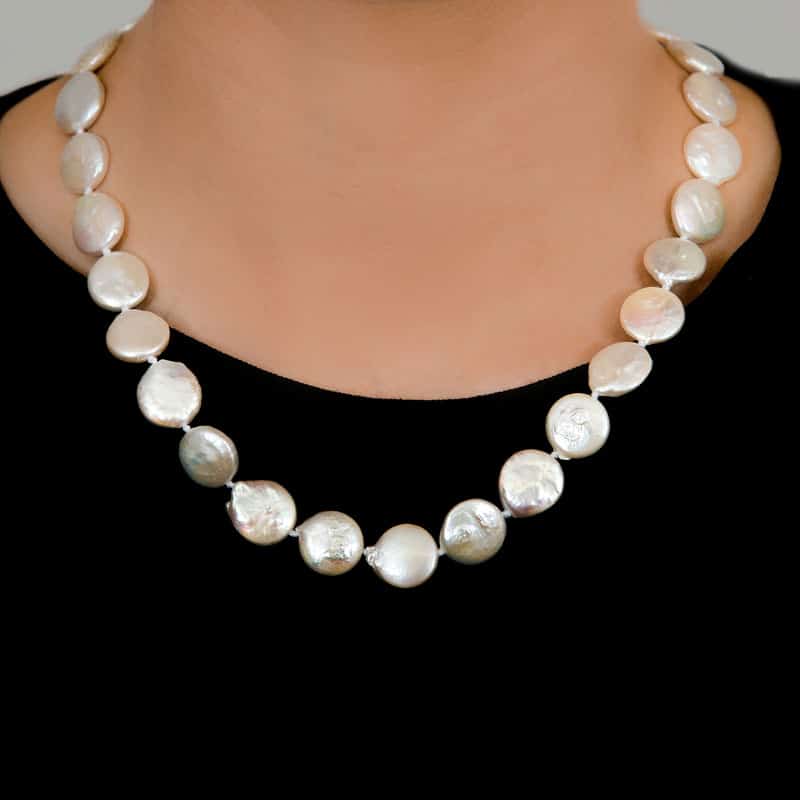
Try pearls as ocean treasures created by oysters or sea creatures in salty water. These are known for their smooth, colorful style. Unlike pearls from ponds, which come from mussels in rivers, ocean pearls are made by animals in the sea. It starts when something like sand gets inside the creature. To keep it safe, the creature covers the thing with wonderful stuff made of minerals and proteins. This becomes a pearl after a while. The sea has different ocean pearls, each with special qualities. Akoya pearls are polished and white from oysters in Japan.
Tahitian pearls come from oysters in French Polynesia and can be black, gray, green, or blue. For a long time, people have liked ocean pearls because they’re rare and fancy. They’ve used them to make pretty jewelry. Even now, these saltwater pearls remind us of forever beauty and the wonders of nature.
1. Origin
Oysters, which live in oceans and seas, create something amazing. It’s like they’re making art. They take tiny grains of sand or other small things and cover them with shiny stuff. Over time, these covered things become pearls. Think of oysters as artists. They keep adding layers to the covered things, and those layers become beautiful pearls.
Pearls can be big or small, and they come in different shapes and colors. Each pearl has its own story from the ocean. They go from the oysters’ homes in the sea to jewelry boxes. Remember, the next time you see saltwater pearls, it’s like you’re looking at nature’s art, something really special that comes from the ocean..
2. Value
Try something even more valuable and extra special because not many are made, but lots of people want it. Well, that’s what’s happening with these things. They’re becoming really precious and super nice because only a few are produced, and many people want to have them.
Think about having something that’s really unique and stands out, and everyone wants to have it. These saltwater pearls make these things even more wanted, and people like them.
3. Shape
Jewelry makers usually like to use a round shape for their pieces. This shape looks like a circle or a ball. It’s popular because it makes the jewelry feel comfy and look wonderful. Think ofa necklace with round beads. It feels smooth on your skin and looks good. Earrings, bracelets, and rings are the same. This round shape is something people have always liked.
When people shop for jewelry, they often pick things with a round design because it looks good. This has made the round shape a classic in jewelry making. So, if you’re making your jewelry or choosing what to wear, think about going for the round shape. Saltwater pearls are well-liked and give a graceful look that could be just what you want.
4. Luster
Think aboutregular things around you changing into super bright versions of themselves. It’s like they’ve got an upgrade, becoming bright and grabbing your attention easily. Think of it as an extra brightness that quickly grabs your attention and makes everything look awesome.
This freshwater vs saltwater pearl’s extra glow makes everything look better, like magic, and you can’t help but be interested. It’s like a plain thing turning into something cool and exciting, shining in a way that makes you want to look at it again and again.
5. Colors
You often see these things in colors like white, cream, and silver. They’re quite common and have natural shades. Their appearance is calm and nice. They come in different shades of white, from bright to soft, and also cream and silver tones. These Saltwater pearls give them a peaceful feeling.
Choose the whiteness of fresh snow, the smoothness of cream, and the shine of silver all in these things. Their colors are like a picture painted by nature. When you look at them, you might feel peaceful and comfy, like when you see calm landscapes. In a place with many bright colors, these simpler and natural shades stand out quietly. They remind us of the beauty in simple things.
6. Cultivation
Usually, oysters only make one pearl at a time. This makes it slow to get lots of pearls. Think aboutoysters as makers of pretty jewelry. Inside an oyster, a pearl forms step by step. But here’s how each oyster usually makes just one pearl at a time. These saltwater pearls make the process a bit slow. Think about planting seeds to grow trees. If you can only plant one seed, you won’t get a big forest fast.
Similarly, because oysters usually only make one pearl, not many pearls are produced. Scientists are curious people, though. They always look for ways to speed things up. They try to see if they can get oysters to make more pearls together. It’s kind of like trying to make a tree grow more branches all at once. If they do it, we could have more pearls and more beauty in the place.
7. Cost
Sometimes, things that aren’t easy to get and look good can cost more. These saltwater pearls are because few of them are around, and they grab your attentionwith their awesome looks. So, when something is neither common nor super good-looking, it usually costs more money. When there isn’t a lot of something, and it also looks fantastic, people want it.
Since there’s not a big supply, but there’s a big want, the price goes up. So, whether it’s a rare treasure, a cool thing that not many people have, or something that’s designed amazingly, if it’s hard to find and looks awesome, it will likely cost you more cash.
Conclusion
When we compare freshwater vs saltwater pearls, we see some shiny differences. Freshwater pearls are like gems from calm lakes and rivers, while saltwater pearls drop out of the deep ocean.
Both have unique qualities that make them special. Saltwater pearls from oysters in the sea have a classic beauty, often round and smooth. They shine like moonlit drops.
Why does this matter? Well, freshwater pearls are friends to your wallet, giving beauty without a big price. Saltwater pearls, being rarer, can be pricier but bring ocean style. If you choose freshwater or saltwater pearls, remember that pearls are nature’s art. Each one tells a story of water and time, of gentle rivers or deep sea mysteries.
So, go ahead and pick the pearls that whisper to your heart and style. Just like water, both kinds of pearls hold a secret beauty that’s yours to valuable.


